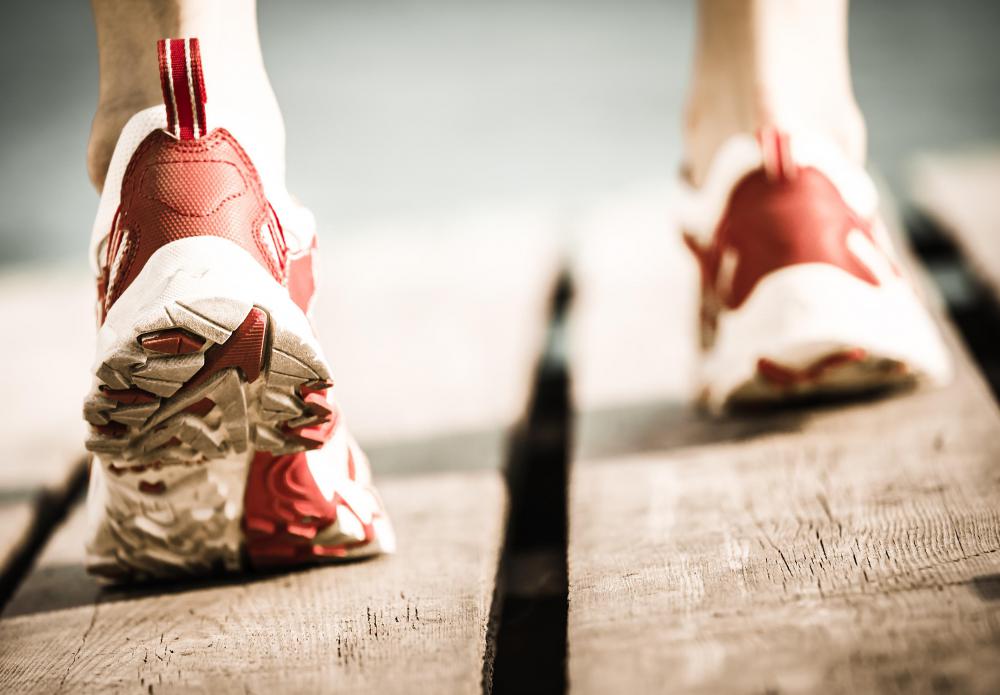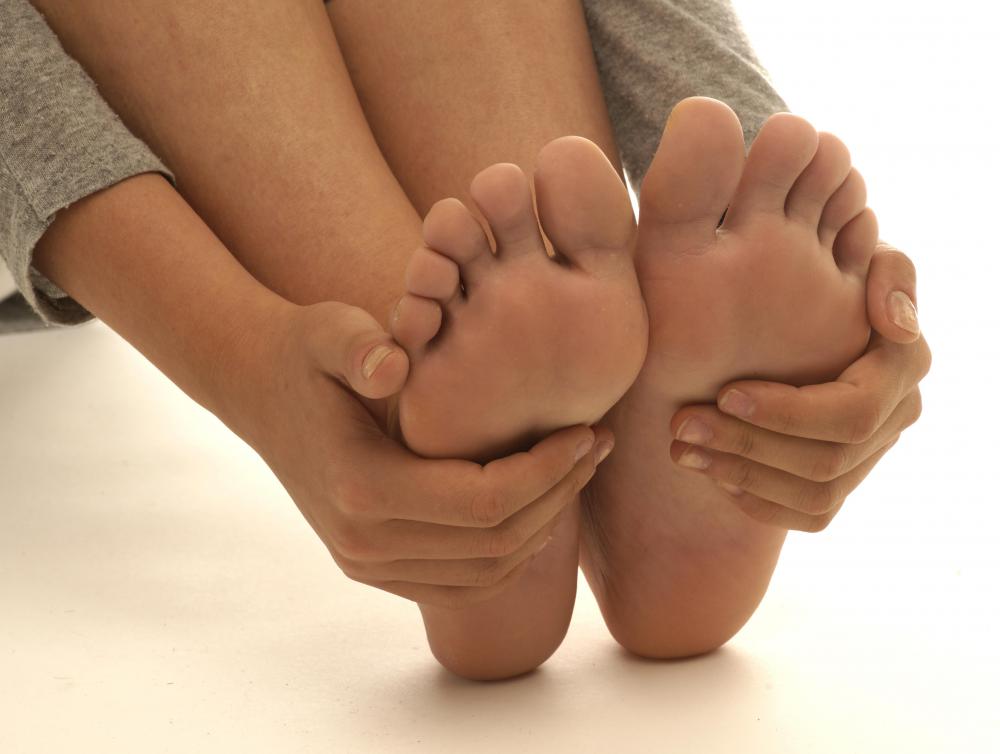At WiseGEEK, we're committed to delivering accurate, trustworthy information. Our expert-authored content is rigorously fact-checked and sourced from credible authorities. Discover how we uphold the highest standards in providing you with reliable knowledge.
What Is Foot Pronation?
Foot pronation is a condition in which the foot and ankle rotate inward while a person is walking or running. If the amount of pronation is not excessive or limited, then pronation prevents injuries and provides an efficient running style. Excessive pronation, known as overpronation, is a common problem that reduces efficiency and increases the chance of injury. Underpronation, or supination, is less common but involves a lack of inward rotation. Foot pronation can be minimized or encouraged by wearing appropriate footwear.
When the foot hits the ground, its job and the job of the ankle is to provide stability while absorbing as much of the impact as possible. Instead of landing straight, which wouldn’t be effective at absorbing shock, the ankle and foot rotate inward a small amount. This is known as foot pronation and is a normal and essential part of human gait. It is estimated that, in healthy feet, the ankle and foot roll inward around 15 percent, which is enough to absorb impact and distribute it effectively.

Foot pronation, however, also can cause problems if it is excessive. When the foot lands, especially during high-impact activities such as running, excessive inward rotation places a large amount of stress on the joints. Over time, the soft tissue starts to permanently stretch out and the joint functions differently than normal. This results in an inefficient running style, pain and potential injuries in the leg and hip. Overpronation is often associated with a flattened foot arch, although the two conditions don’t always appear together.

Underpronation, in which the natural inward rotation of the foot and ankle doesn’t occur, is less common but still can cause problems. This also is known as supination and is often associated with a high foot arch. A lack of foot pronation means the body isn’t effectively absorbing the shock of impact. This, like overpronation, can cause pain and injuries elsewhere along the body’s kinetic chain.

Pronation is an important part of human gait, so under and overpronation often need to be corrected if they are causing pain. Correction can be as simple as fixing another problem in the body, but the pronation usually cannot be easily fixed directly. Instead, the amount of foot pronation can be controlled using the correct footwear. The effects of underpronation, for example, can often be resolved using a cushioning shoe to help absorb impact. Overpronation usually required motion control or stability shoes, which prevent excessive inward rotation and reduce the risk of injury.
AS FEATURED ON:
AS FEATURED ON:














Discuss this Article
Post your comments